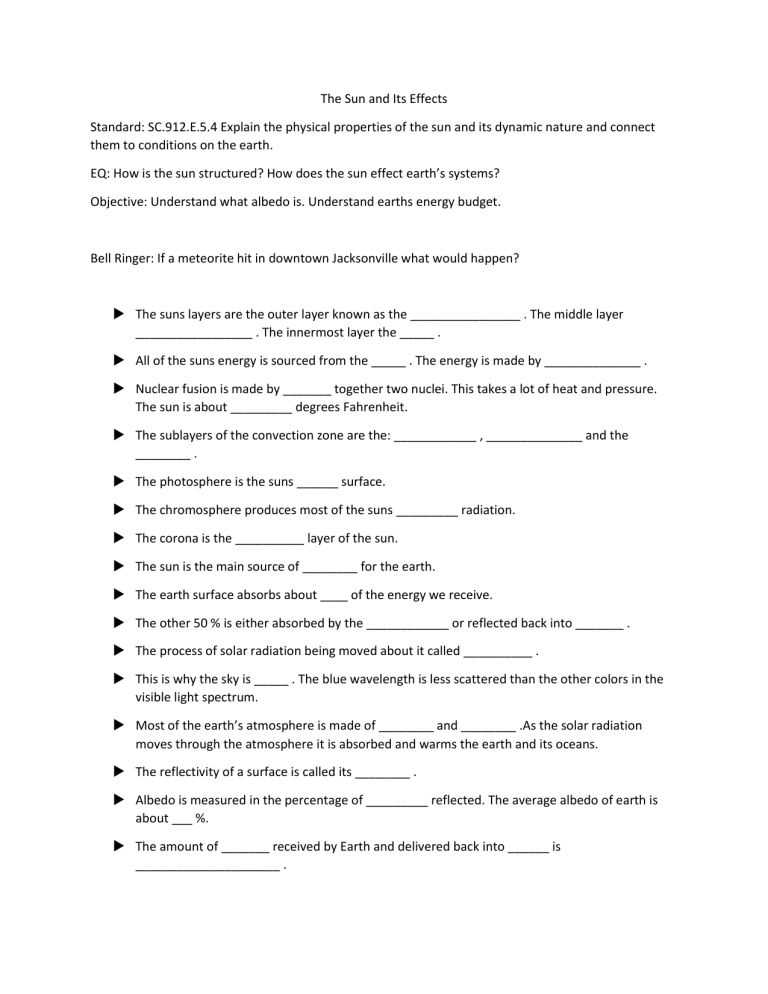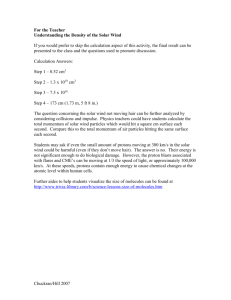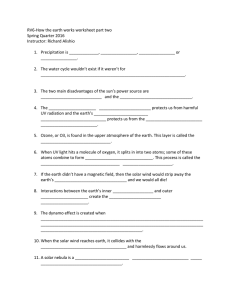
The Sun and Its Effects Standard: SC.912.E.5.4 Explain the physical properties of the sun and its dynamic nature and connect them to conditions on the earth. EQ: How is the sun structured? How does the sun effect earth’s systems? Objective: Understand what albedo is. Understand earths energy budget. Bell Ringer: If a meteorite hit in downtown Jacksonville what would happen? The suns layers are the outer layer known as the ________________ . The middle layer _________________ . The innermost layer the _____ . All of the suns energy is sourced from the _____ . The energy is made by ______________ . Nuclear fusion is made by _______ together two nuclei. This takes a lot of heat and pressure. The sun is about _________ degrees Fahrenheit. The sublayers of the convection zone are the: ____________ , ______________ and the ________ . The photosphere is the suns ______ surface. The chromosphere produces most of the suns _________ radiation. The corona is the __________ layer of the sun. The sun is the main source of ________ for the earth. The earth surface absorbs about ____ of the energy we receive. The other 50 % is either absorbed by the ____________ or reflected back into _______ . The process of solar radiation being moved about it called __________ . This is why the sky is _____ . The blue wavelength is less scattered than the other colors in the visible light spectrum. Most of the earth’s atmosphere is made of ________ and ________ .As the solar radiation moves through the atmosphere it is absorbed and warms the earth and its oceans. The reflectivity of a surface is called its ________ . Albedo is measured in the percentage of _________ reflected. The average albedo of earth is about ___ %. The amount of _______ received by Earth and delivered back into ______ is _____________________ . This is a cyclical flow of energy in and out of the earth. Like a dance between the earth and the sun. The negative effects of the sun are caused by __________________ or _____ rays for short. These rays cause ____________ . The _______ which is a molecule made up of three ________ atoms. These atoms help create the ___________ . This layer helps protect us from harmful solar radiation. Small dark areas on the sun are known as __________ . These spots vary in size some can be small about the size of the _______ . Others can be as large as __________ . They tend to cycle through every ____ years. Sunspots are much _______ than the normal temperatures on the sun and are highly _________ They may last a few hours or a few ________ . When solar flares happen massive amounts of __________ , _______ and _______ waves are released. Along with charged particles such as ________ and _________ . Solar flares cause a lot of damage to _________ in space. This flow of charged particles is called __________ . Solar wind can knockout power grids on earth. These charged particles eventually bounce off of the ___________ and interact with particles in our atmosphere that help create the _______ . This is a bright emission of atoms that is seen as bright lights in the sky. They are also known as the ______________ . Scientists use ___________ . They also use special satellites that orbit the sun. A lot of scientists believe that sunspot activity is directly linked to ________ climate. Exit Ticket Questions: How do solar flares interfere with communication and power systems? In your own words explain solar wind. How does the sun contribute to space weather? Describe earth’s energy budget.




